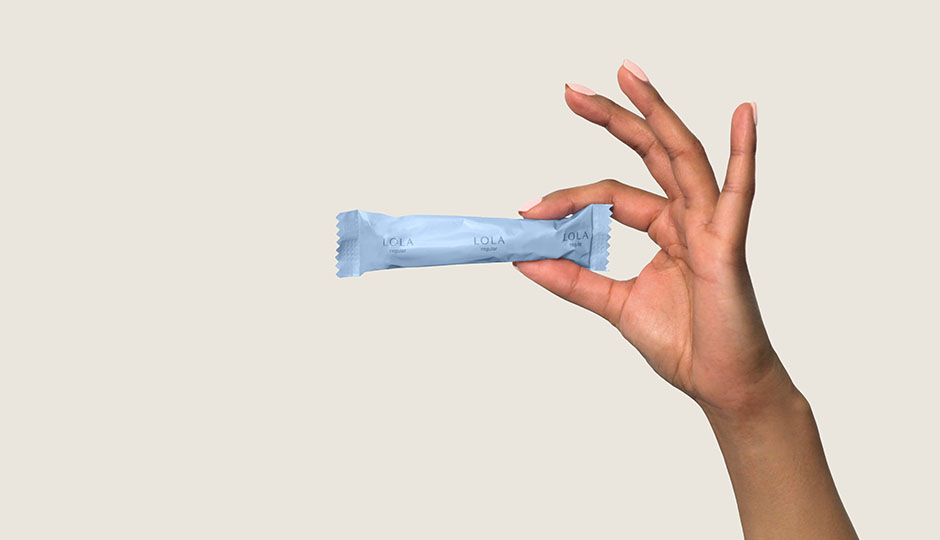What’s the Deal With Organic Tampons? (And Should You Be Using Them?)

Image via LOLA.
Fact: Talking about tampons can be awkward. But lately, organic tampon brands like LOLA and Cora (which started in Philly) — along with alternative forms of feminine care products, like THINX period panties, menstrual cups, etc. — have been generating a lot of buzz in the health-conscious world. After all, we care about the food that goes into our bodies, as well as the beauty and skincare products we use on it. Why would your feminine care products be any different?
We were curious to learn more about WTF is up with organic tampons (and we’re sure you are, too) so we turned to two experts who know what they’re talkin’ about: Dr. Jerrold Snyder, a gynecologist with Women’s Specialists of Bucks County, and Alex Friedman, a Wharton grad who has some skin in the organic tampon game after co-founding LOLA organic. See what we learned below.
Let’s start with why you should care about what kinds of tampons you use. The reason, basically, is because your vagina is super absorbent — so when you stick a tampon up there and let it hang out for a few hours, your body can absorb the chemicals that were used to make that tampon, which can include stuff you probably don’t want to be absorbing, like pesticides and dyes. But here’s where things get tricky: You can’t really be sure what goes into making a lot of tampons you find at the drugstore. The FDA doesn’t require tampon companies to list their ingredients, and the language used on the side of many mainstream tampon boxes reads “Ingredients may include.” Not helpful, we know.
As Dr. Snyder tells us, “The awareness of how much potential damage tampons can do because of their processing — and how 100 percent organic tampons may be better — has been on the market for 20 years.” But the jarring thing is, there still haven’t been any studies conducted on the longterm effects of the use of artificial fibers used to make many tampons. (There were some tests conducted in the 1980s relating to Toxic Shock Syndrome (TSS), a rare bacterial infection that can be life-threatening. The studies found that TSS was caused by bacteria build-up from the super-absorbent synthetic fibers these tampons were made out of. Tampon companies responded by decreasing the absorbency of their tampons, Dr. Snyder tells us.)
LOLA co-founder Alex Friedman found this lack of information alarming enough to do something about it. “The reason we started the brand is that in the absence of data and knowing what’s in other products, we simply prefer to use something we know and trust,” she says. So what’s the difference between an organic tampon and a non-organic tampon? Well, in LOLA’s case, they provide 100 percent organic cotton tampons that are free of synthetic fibers, chemical additives, fragrance, dyes and bleach — oh, and the applicators are made of BPA-free plastic. It’s a subscription-based service that allows you to customize your box of tampons to fit your flow, and it’s delivered right to your doorstep every month for $10.
Friedman hopes to disrupt the feminine care industry by “making women choose with their wallets.” Her stance falls in line with legislators like Representative Carolyn Maloney (a strong advocate for women’s issues) to change laws around ingredient transparency. Her idea is, if enough people are bothered by the fact that the FDA doesn’t require feminine care companies to disclose tampon ingredients — bothered enough to make the switch to organic tampons — big feminine care product companies will have no choice but to respond. “If it gets a critical mass, we’re going to have some studies,” agrees Dr. Snyder. “You would need [companies like] LOLA to pay for studies about synthetic tampons, because synthetic tampon companies are not going to do a study that makes them look bad. Plus, since it’s not a drug we’re dealing with here, the FDA won’t conduct the study either.”
Dr. Snyder agrees that the whole movement behind organic tampons stems from the lack of studies done on the effects of tampons made using chemicals and synthetic fibers. He does point out, though, that the main reason bleach and chemical processing have been used in tampons for the past 60 or 70 years is to avoid introducing any foreign bacteria into the vagina. That said, “The more we can avoid processing stuff, probably the better,” he says. Read: If you can go organic, you might as well.
Most importantly, though, is to start asking questions in the first place so that we’re not just putting something in our bodies without knowing what’s in it. So don’t be alarmed the next time you walk down the feminine care aisle of the drugstore, but do start to pay attention to what you are buying. That’s just being smart about your health, you know?
Like what you’re reading? Stay in touch with Be Well Philly—here’s how:
- Like Be Well Philly on Facebook
- Follow Be Well Philly on Twitter
- Follow Be Well Philly on Pinterest
- Get the Be Well Philly Newsletter


